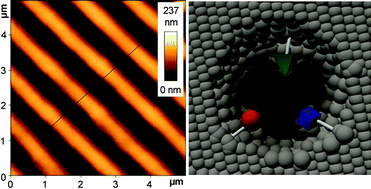Nanopatterning molecularly imprinted polymers by soft lithography: a hierarchical approach†
Abstract
We use

* Corresponding authors
a CNRS, LAAS, 7 avenue du colonel Roche, Toulouse, France
b Université de Toulouse, UPS, INSA, INP, ISAE, LAAS, Toulouse, France
c
Laboratoire de l'Intégration du Matériau au Système UMR 5218, Université de Bordeaux, Talence, France
E-mail:
cedric.ayela@ims-bordeaux.fr
Tel: +33 5 40006550
d
Université de Technologie de Compiègne, UMR CNRS 6022, BP 20529, Compiègne, France
E-mail:
karsten.haupt@utc.fr
Fax: +33 3 44201910
Tel: +33 3 44234455
We use

 Please wait while we load your content...
Something went wrong. Try again?
Please wait while we load your content...
Something went wrong. Try again?
H. Lalo, C. Ayela, E. Dague, C. Vieu and K. Haupt, Lab Chip, 2010, 10, 1316 DOI: 10.1039/B924315A
To request permission to reproduce material from this article, please go to the Copyright Clearance Center request page.
If you are an author contributing to an RSC publication, you do not need to request permission provided correct acknowledgement is given.
If you are the author of this article, you do not need to request permission to reproduce figures and diagrams provided correct acknowledgement is given. If you want to reproduce the whole article in a third-party publication (excluding your thesis/dissertation for which permission is not required) please go to the Copyright Clearance Center request page.
Read more about how to correctly acknowledge RSC content.
 Fetching data from CrossRef.
Fetching data from CrossRef.
This may take some time to load.
Loading related content
